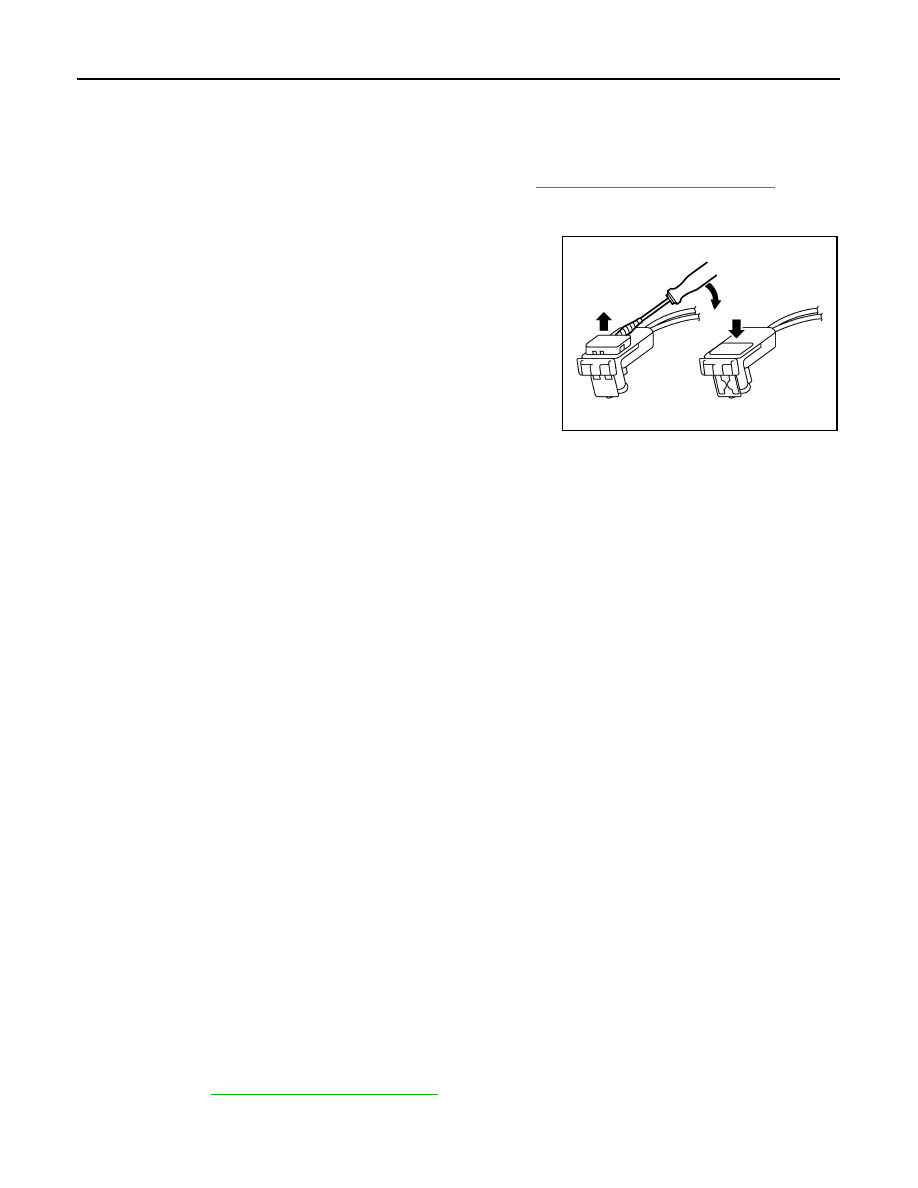Content .. 1069 1070 1071 1072 ..
Infiniti G37 Coupe. Manual - part 1071

SB-6
< ON-VEHICLE REPAIR >
FRONT SEAT BELT
• Remove the fixing anchor bolt of the outer anchor.
2.
Remove the shoulder anchor.
• Remove the shoulder anchor cover.
• Remove the fixing anchor bolt of the shoulder anchor.
3.
Remove the rear side finisher and rear pillar finisher. Refer to
INT-14, "Removal and Installation"
.
4.
Remove the seat belt bracket. Remove the fixing bolt of the seat belt bracket.
5.
Remove the seat belt assembly.
• Disconnect the seat belt pre-tensioner connector.
CAUTION:
• For installing/removing seat belt pre-tensioner connec-
tor, insert thin screwdriver wrapped in tape into notch,
lift lock and remove connector.
• Install connector with lock raised, and push lock into
connector.
• Disconnect the pre-crash seat belt connector.
• Remove the fixing screw and anchor bolt of the pre-tensioner seat belt retractor.
INSTALLATION
Install in the reverse order of removal.
SEAT BELT BUCKLE
SEAT BELT BUCKLE : Inspection
INFOID:0000000001728786
AFTER A COLLISION
WARNING:
Inspect all seat belt assemblies including retractors and attached hardware after any collision.
NISSAN/INFINITI recommends that all seat belt assemblies in use during a collision be replaced
unless the collision was minor and the belts show no damage and continue to operate properly. Fail-
ure to do so could result in serious personal injury in an accident. Seat belt assemblies not in use dur-
ing a collision should also be replaced if either damage or improper operation is noted. Seat belt pre-
tensioners should be replaced even if the seat belts are not in use during a frontal collision in which
the air bags are deployed.
Replace any seat belt assembly (including anchor bolts) if:
• The seat belt was in use at the time of a collision (except for minor collisions and the belts, retractors and
buckles show no damage and continue to operate properly).
• The seat belt was damaged in an accident (i.e. torn webbing, bent retractor or guide, etc.).
• The seat belt attaching point was damaged in an accident. Inspect the seat belt attaching area for damage
or distortion and repair as necessary before installing a new seat belt assembly.
• Anchor bolts are deformed or worn out.
• The seat belt pre-tensioner should be replaced even if the seat belts are not in use during the collision in
which the air bags are deployed.
PRELIMINARY CHECKS
1.
Check the seat belt warning lamp/chime for proper operation as follows:
a.
Turn ignition switch ON. The seat belt warning lamp should illuminate. Also, the seat belt warning chime
should sound for about six seconds.
b.
Fasten driver seat belt. The seat belt warning lamp should turn off and the chime (if sounding) should
stop.
2.
If the air bag warning lamp is blinking, conduct self-diagnosis using CONSULT-III and air bag warning
lamp. Refer to
SRC-15, "Diagnosis Description"
.
3.
Check that the seat belt retractor, seat belt anchor and buckle bolts are securely attached.
4.
Repeat steps above as necessary to check the other seat belts.
PHIA0953J